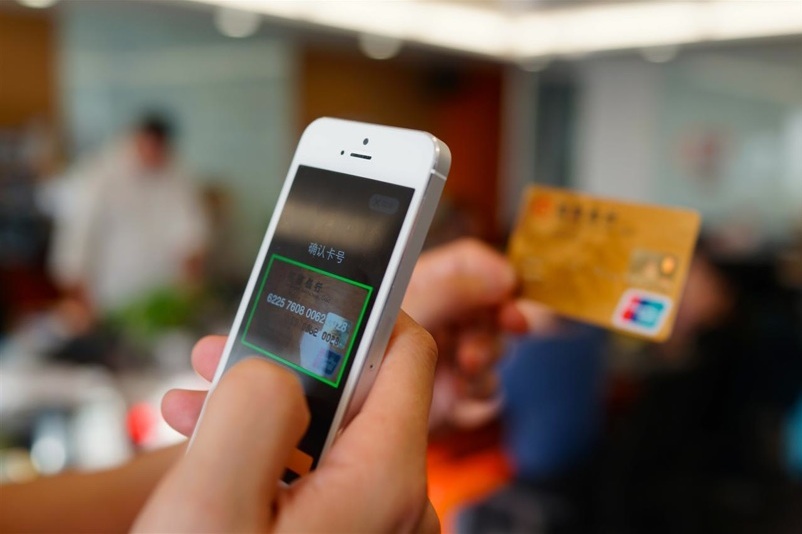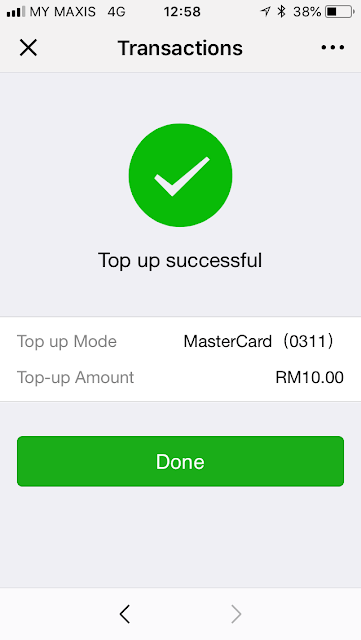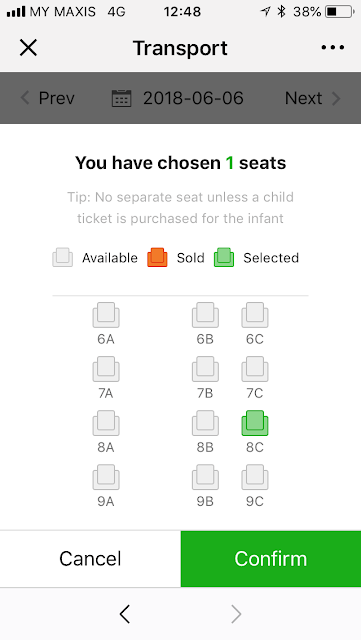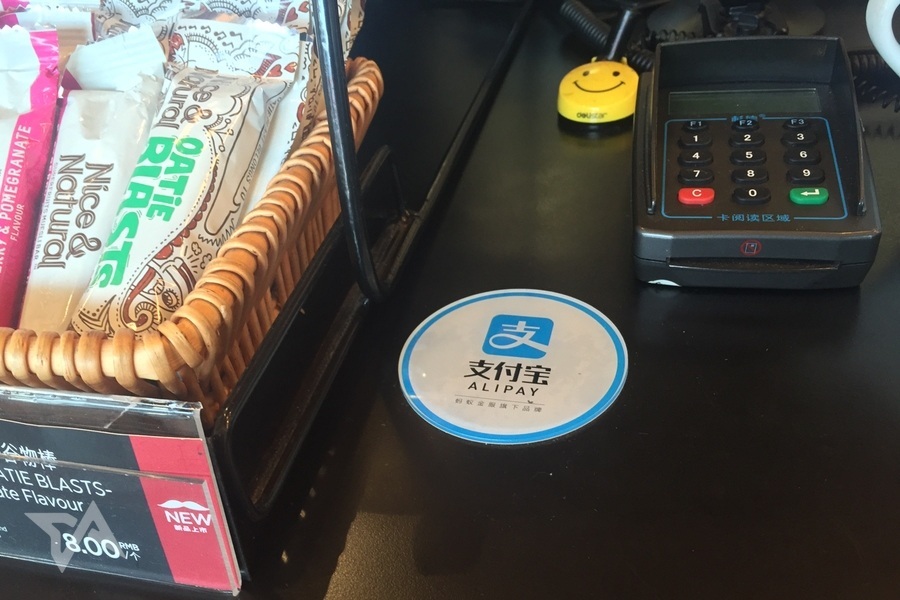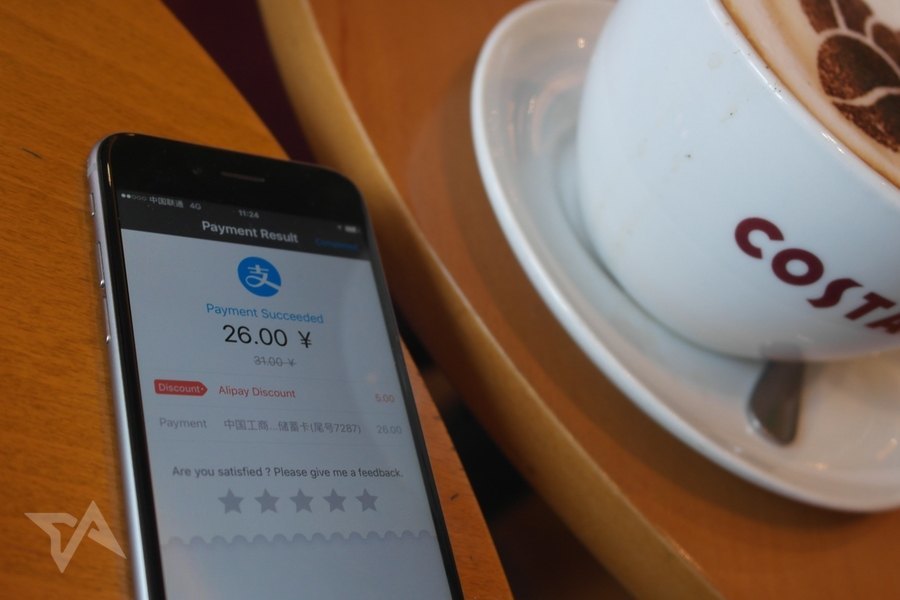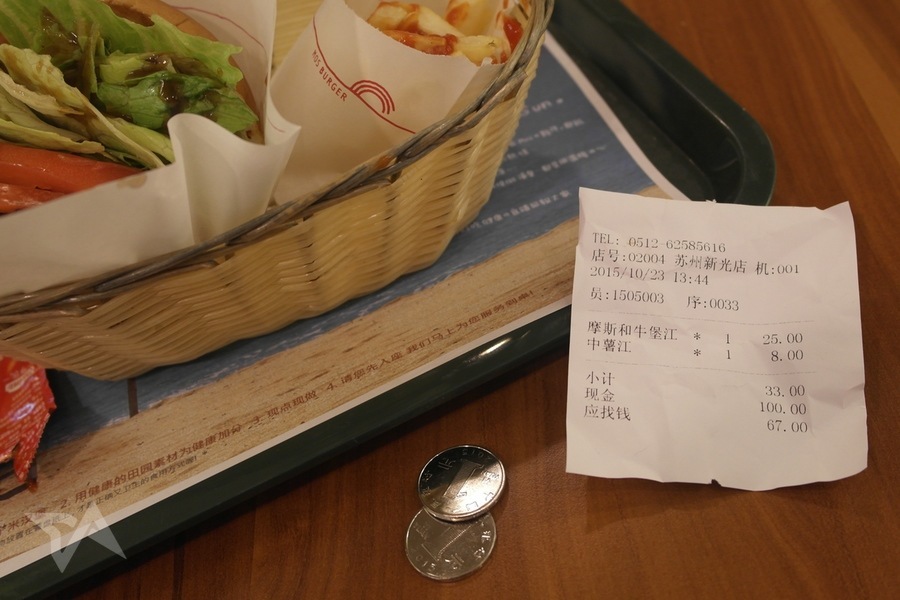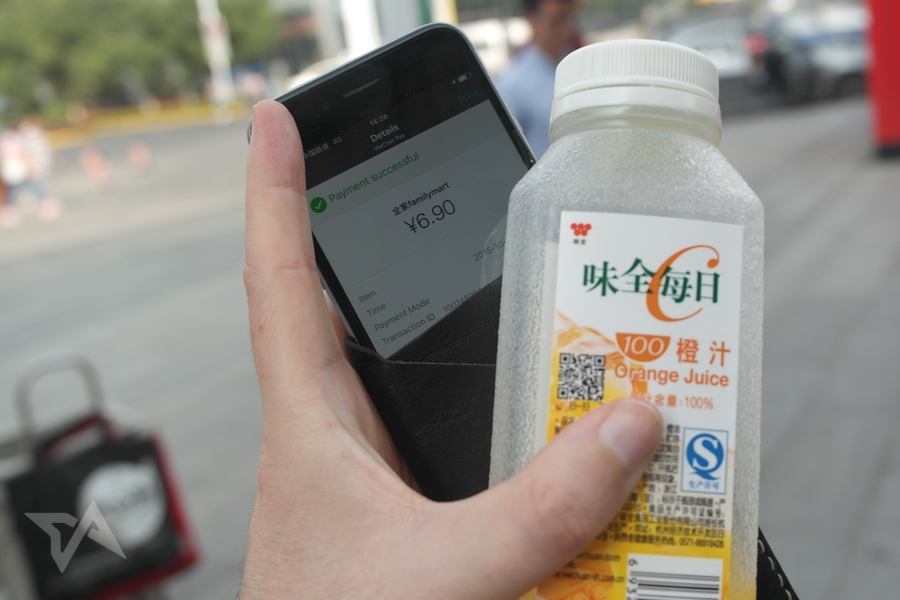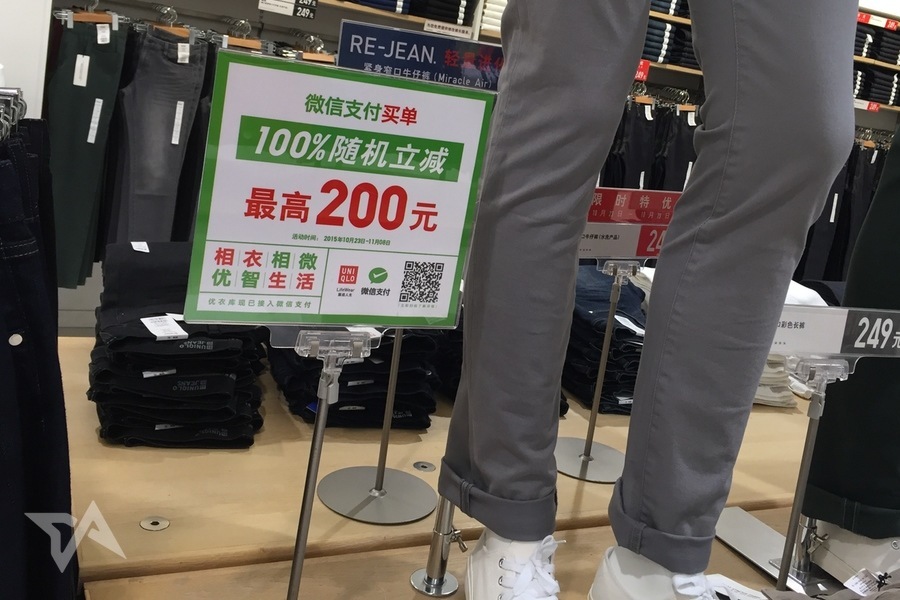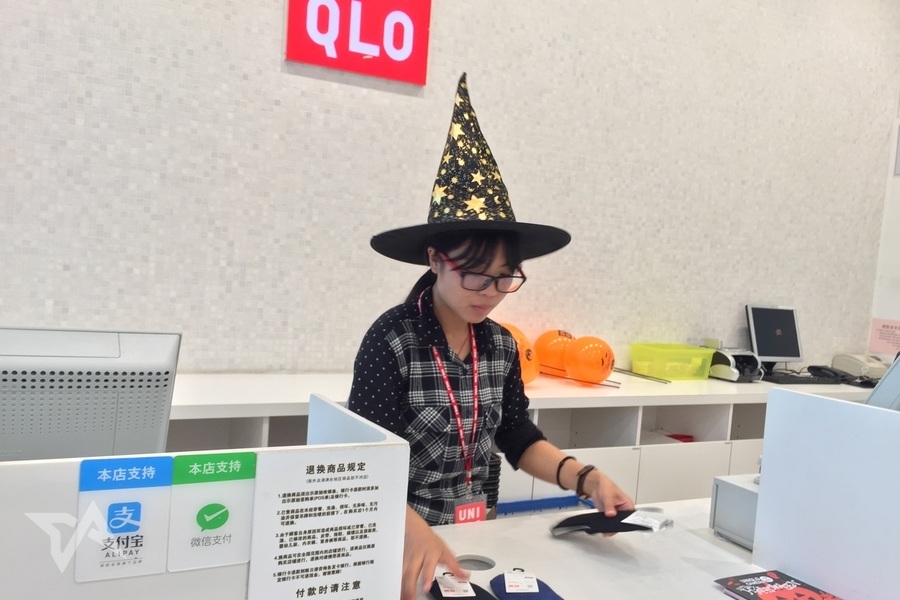“I’m going to take some cash. I’ll probably need it,” I say, as I prepare to leave the house. The cat
yawns in response. I yawn. Are cat yawns contagious, like human ones?
I need some coffee.
So that’s going to be my first stop as I try to get through an entire day using only WeChat to pay for stuff. I don’t have a lot of confidence that it’ll work as planned, which is why I stuff some money and a bank card into my pocket as I always do. Even though the hugely popular messaging app has
600 million active users at the last count and is made by Tencent, one of China’s top web giants, I’ve not seen many people using WeChat in stores to pay for stuff. I’ve noticed a bunch of retail chains have WeChat Payment or Alipay stickers by the counter, but it’s far from widespread.
So today I’ll try to use WeChat’s cashless mobile payments as much as I can throughout the day. If it’s not available at a store, I’ll opt for Alipay, Alibaba’s mobile wallet app. Failing both, I’ll go find a different shop or just pay up in cash.
I head out.
10:45am: Parking on the street
Cost: RMB 5 (US$0.80)
WeChat win? Nope
Just as I’m finishing reversing into the spot, an elderly parking attendant appears out of nowhere at the driver-side window. Dao. Dao. Dao. Ting! I smile and give him a nod as if I were listening to his advice. I’m not sure if China has parking meters – I’ve never seen any. This chap does the job.
I decide that now’s a bad time to start my mobile payments experiment and hand over a five renminbi note, which he pockets with a xie xie and then ambles off so quickly that I’m not sure where he went. You’re supposed to be given a receipt; I saw him holding a wad of them. He’ll probably pocket that money, I think to myself. That’s another argument in favor of cashless payments – stopping civic funds vanishing into the ether.
11am: Coffee
Cost: RMB 26 (US$4.10)
WeChat win? Nope
Coffee. Coffee. Coffee. I walk briskly past Starbucks. I’m not a Starbucks-snubbing hipster – I just know the chain doesn’t take in-store mobile payments in China even though it has all the equipment there. The server can scan the QR code from my Starbucks app for loyalty points and send the information online, so the company can surely accept WeChat or Alipay because they use exactly the same procedure. Probably some corporate bureaucracy holding it up.
A block further on, I reach Costa Coffee. There’s a plastic Alipay logo stuck to the counter. Can I pay with WeChat, I ask? I cannot. So I launch the Alipay app and hit the “Pay” icon. A QR code pops up, which the barista scans quickly and the payment is done in a beat. Far quicker than paying with a credit card. Faster even than handing over the right change. She tells me that Costa added Alipay as an option just a few weeks ago.
When my phone is handed back to me I notice I was only charged RMB 26 (US$4.10) instead of the usual RMB 31 (US$4.90) for my medium cappuccino. The app screen shows me I got an “Alipay discount” for no discernable reason other than that I used the app.
The Alipay app encourages me to rate that branch of Costa, so I give it five stars. Then it demands I snap a photo, so I do that and press “send.” I’ve just been tricked by Alibaba into creating Yelp-style content. I guess the discount buttered me up.
1:40pm: Lunch
Cost: RMB 33 (US$5.20)
WeChat win? Nope
I’ve already picked out my order when I remember to ask if I can pay using WeChat. I’m told I cannot – nor Alipay.
But I could use Dianping, the Mosburger lady tells me. That’s a reference to the daily deals site that Tencent, the maker of WeChat, has invested in. That entails me buying a Dianping deal. More specifically, a discounted coupon.
To find it, I dig through the “Group Buy” section inside the “Wallet” part of WeChat. The location-based thingy inside the food part of the Dianping web app embedded in WeChat shows me that the nearest deal to me is in Mosburger. So it knows where I am.
I find a Mosburger coupon worth RMB 30 (US$4.70) that I can get for RMB 25 (US$4). If I spend more, I’ll have to make up for it in cash, or if I spend less I won’t get any change back. I can pay for the Dianping voucher using WeChat Pay.
There’s no queue behind me, but I’m feeling frustrated at this point.
I decide this is too much hassle and it still involves me using a bit of cash, so I shove my phone in my left pocket and pull out some cash from the other.
It’s not going well for WeChat so far.
2:20pm: Refreshments
Cost: RMB 6.9 (US$1.10)
WeChat win? Yes. Finally!
I avoided the sodas in Mosburger, so now I need a drink. The nearest convenience store is FamilyMart – which, super conveniently, does take WeChat Payment. I know that because I’ve used it before. If anyone at Tencent is spying on my WeChat spending habits, they’ll know I buy a lot of Kirin and Asahi at FamilyMart.
A sign near the cashier’s desk, partially tucked behind a Durex vibrator, shows that the store accepts both Alipay and WeChat Payment. The Durex display shelf is at child’s eye level. The woman serving customers notices me snapping a few photos. I wonder if she thinks I’m taking a photo of the abundant array of condoms, lubes, and vibrators.
I need an orange juice to wash away the saltiness of the Mosburger fries, so I grab one from the fridge. Shuffling up to the counter, I launch WeChat, go to the Wallet section, and hit “Quick Pay”; the cashier is already poised with the scanner. Finally… WeChat Pay makes itself useful for the first time today.
I kinda hope she now realizes I was taking a photo of the sign, not the vibrator.
I’ve had discounts in the past when paying with WeChat at several chains of stores, but this time there was none.
2:40pm: Socks
Cost: RMB 51.6 (US$8.10)
WeChat win? Yup
I spot a Uniqlo and wonder if it’s too late in the year to grab a few summery essentials. It’s still 25’C in late October. As I look for the men’s section, I spot the WeChat Payment logo on a few notices scattered around the store saying that a discount as high as RMB 200 (US$31.50) is available if you pay using the messaging app. In the corner of the notice is a QR code to follow Uniqlo’s WeChat brand account.
After picking out three pairs of short summer socks, I look around for plain T-shirts, but it’s all fleeces and jackets. At the counter, the clerks are all wearing Halloween hats. When did Halloween become a thing in China? There’s a sign by the counter that’s similar to the FamilyMart one.
The girl in the witch’s hat tells me that’s RMB 59 (US$9.30), but it turns out to be just RMB 51.6 (US$8.10) when I look at the screen after the payment is completed.
I’m enjoying the discounts.
3pm: A few things for dinner
Cost: RMB 141 (US$22.20)
WeChat win? Nope
A quick web search reveals that several major supermarket chains in China take mobile payments, such as Walmart, Carrefour, and Lianhua. But those are not in my area. The place I usually go to for my weekly shop, Sam’s Club, hasn’t added support.
Right now, I only need a handful of fresh things, so I head to my usual deli-cum-imported-goods-store for stuff like mozzarella and fresh yoghurt. And vodka.
Unsurprisingly, no WeChat Pay or Alipay signs around. I pay in cash. You might have more luck with m-payments at such small stores in Shanghai or Beijing.
3:10pm: Vegetables
Cost: RMB 13.2 (US$2.10)
WeChat win? Nope
There’s also no chance of anything but cash at the local ‘wet’ market. The stalls don’t even take cards.
I walk out with a cluster of small change in my back pocket, including eight one-jiao coins that I’ll later throw onto a little tray in a drawer at home, where they’ll stay for years with hundreds more of them until I remember to use them up in some way. One of those coins is worth 2 US cents.
3:55pm: Gas station
Cost: RMB 200 (US$31.50)
WeChat win? Nope
A while later, I pull into a Total gas station for the usual fill-up. You can pay in cash by handing it to the attendant or you can walk into the store to pay with a card. Those are the only two options – as 20th-century as gas-guzzlers themselves.
4:50pm: Water
Cost: RMB 16 (US$2.50)
WeChat win? Yes
Back at home, I realise the 18-liter purified water bottle is empty and needs to be changed. I open WeChat, find the brand account of my water supplier, and with just one click I’ve ordered a delivery of a new bottle.
OK, this is cheating a little as I paid for a fistful of vouchers for the water months ago (in cash), so I’m not actually paying for this through WeChat. But this method of ordering is great because it replaces the previous phone call to the water company hotline. Less human interaction = a win in my book. Besides, now I know that I can buy the vouchers inside WeChat, I’ll do that next time I need more.
5:25pm: Topping up my phone
Cost: RMB 198.5 (US$31.30)
WeChat win? Yup
WeChat can be used for a ton of stuff. Booking a cab though Didi Kuaidi and then paying for it cashlessly; paying utility bills; transferring money to friends; paying off the credit card you’ve linked to your WeChat account; buying rail and train tickets; donating to charity; and saving money in Tencent’s personal wealth fund. Plus, you can top up your mobile credit.
I click that option, then click an amount, and then press my thumb to my iPhone’s home button – and the payment is done. It takes about 10 seconds to do the whole thing.
WeChat is already tied to my phone number, so there’s nothing to input. It sure beats using my telco’s clunky website.
I opt for a RMB 200 (US$31.50) top-up and get a minuscule discount on it.
My day of obedient, mindless consumerism is at an end. The experiment yielded four successful payments using WeChat out of 10 transactions. Add in one paid for using Alipay, and half of the stuff I had to cough up for was handled with quick-as-a-flash m-payments.
That’s not too bad. But considering how powerful Tencent and Alibaba are, with hundreds of millions of users each day on their core products, it’s noticeable that the tech giants haven’t invaded offline retail as much as you’d expect.
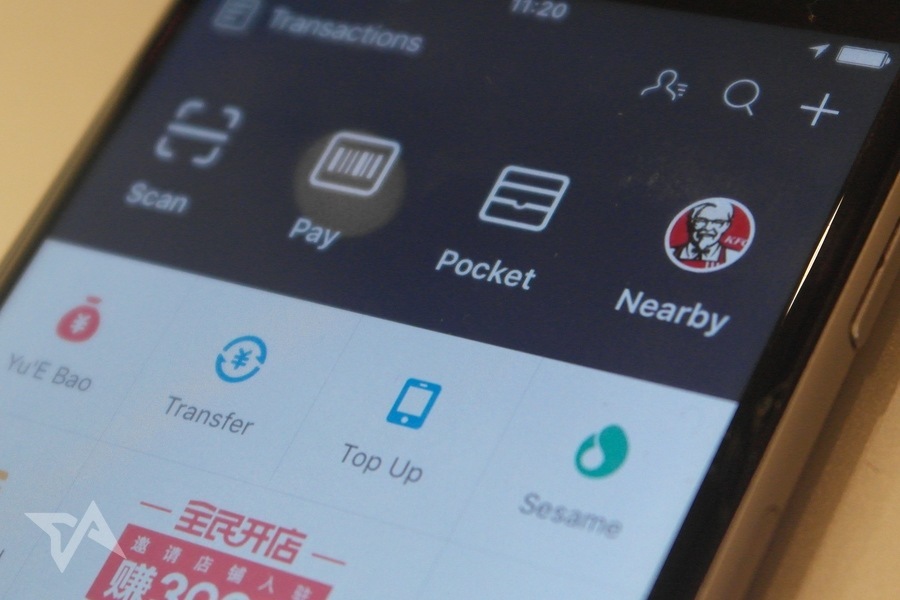
Alibaba’s Alipay is a mobile wallet app, so it’s more focused on payments than WeChat
On the plus side, the tech worked flawlessly each time, and store employees were knowledgeable about what to do.
Could someone in China use mobile payments for everything? Only if they go to stores they don’t usually frequent in areas they usually don’t visit. That’s not what I call convenient. But the shift away from a cash-is-king society is well under way.
Website: https://www.techinasia.com/day-with-wechat-payments-in-stores
